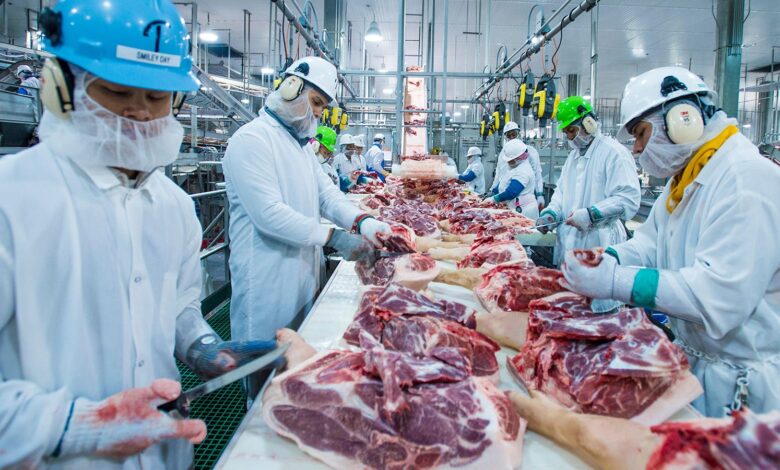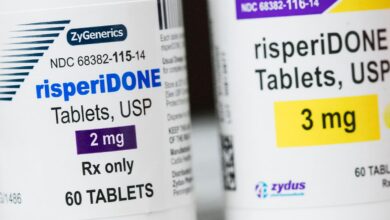Study: ‘Appalling’ U.S. Failure to Protect Frontline Workers During Pandemic

— Lack of protections “created a perfect storm for vulnerable workers,” researchers said
by
Katherine Kahn, Staff Writer, MedPage Today
February 2, 2024
The U.S. regulatory, political, and legal systems failed to prevent thousands of deaths among the nation’s essential workers during the COVID-19 pandemic, according to a scathing analysis.
Frontline workers who had to show up to work during the early days of the pandemic were at high risk for illness and death, due to unmitigated workplace exposure to SARS-CoV-2, reported David Michaels, PhD, MPH, of the Milken Institute School of Public Heath at George Washington University in Washington, D.C., and colleagues.
“From the outset, frontline workers were a factor in the spread of SARS-CoV-2, and they and others were made ill or died as a result of exposures at work,” they wrote in The BMJ, in the first in a series of articles on lessons from the COVID pandemic in the U.S.
Because Black, Hispanic, and immigrant workers are employed in many essential industries, such as healthcare, agricultural production, and public transportation, they were more likely to die from COVID than white workers.
“Imagine if there were no Zoom, no telework, and the highly paid, politically powerful executives in finance and high-tech were required to come into the office every day,” Michaels, who served as the assistant secretary of labor for the Occupational Safety & Health Administration (OSHA) from 2009 to 2017 and was the longest serving administrator in OSHA’s history, told MedPage Today. “I believe we would have seen a national clamor for stronger rules to protect workers. Instead, we mostly ignored the exposures that were occurring in workplaces and the most vulnerable workers paid the price.”
In an accompanying editorial, Gavin Yamey, MD, MPH, of Duke Global Health Institute at Duke University in Durham, North Carolina, and colleagues noted that “ingrained inequalities contributed to devastating pandemic outcomes. The U.S. has greater income inequality and more limited worker protections than its peers, and precarious employment was on the rise even before COVID-19.”
The 1.16 million Americans who died from COVID represent 16% of global deaths in a nation with just 4% of the world’s population, Yamey and colleagues pointed out. About 300,000 children lost one or both parents, and one in three Americans know someone who died from COVID.
A lack of worker protections “created a perfect storm for vulnerable workers,” Michaels and colleagues wrote, noting that the U.S. is one of only six countries without a national universal paid sick leave policy and the only country out of 37 in the Organisation for Economic Cooperation and Development without universal healthcare access.
Furthermore, some employers put profit ahead of workers’ health and safety, and were encouraged to do so by elected officials, the authors wrote. For example, a House Oversight Committee report detailed how the Trump administration pressured the meatpacking industry to keep functioning at full capacity, despite large outbreaks of COVID among its workers.
U.S. systems to ensure the health and safety of workers, including OSHA, the CDC, and state and local health departments, were weak before 2020, but subsequently failed during the pandemic, the study authors said.
“OSHA has historically been structured by Congress and successive administrations as a weak agency, both in terms of resources and its ability to insist that workplaces be made safe,” they wrote. “On a national level, OSHA has only enough inspectors to visit every workplace once every 190 years,” they added, citing a recent American Federation of Labor-Congress of Industrial Organizations Safety and Health Office report.
OSHA also found itself at odds with the CDC on how best to protect frontline workers during the pandemic. Although OSHA had conventional strategies for controlling exposure to airborne pathogens, such as improving workplace ventilation and air quality, the CDC chose to focus on droplet and fomite transmission of SARS-CoV-2, with an emphasis on surgical masks, handwashing, and social distancing.
“It is now clear that the CDC erred in clinging to the droplet dogma,” the authors wrote.
Federal and state OSHA programs received “many thousands of complaints” from workers who faced potential retaliation when they voiced concerns about SARS-CoV-2 exposures or a lack of personal protective equipment (PPE), and many workers’ complaints are still in litigation today.
“The underlying legal regime simply did not provide adequate protection to workers who face serious risks,” Michaels and team wrote. “The consequences of these failures were appalling.”
During 2020, penalties assessed to businesses violating OSHA regulations were extremely small, they noted. For example, OSHA fined Smithfield Packaged Meats Corp. in Sioux Falls, South Dakota just $13,494 for failing to protect workers from SARS-CoV-2 infection, after nearly 1,300 workers contracted the virus and four died. That amount was the maximum allowed by law.
Michaels and colleagues offered several action points on how to protect frontline workers going forward:
- OSHA should issue new standards on pandemic preparedness and the prevention of workplace exposure to airborne pathogens
- Every employer should be required to develop specific plans to protect its workers. Pandemic preparedness plans should ensure worker access to PPE, vaccines, and other health interventions
- Universal paid medical leave should be established to allow workers to stay home when sick
- Local building codes should be updated to improve HVAC systems and air quality
- OSHA should issue a standard that workers be included in workplace risk assessment and abatement activities, and be protected against retaliation for pointing out threats to their health and safety
- Legislation is needed that expands OSHA’s ability to perform inspections and issue penalties
- Better coordination is needed between workplace safety and public health agencies
“These policies and programs would be beneficial even in the absence of a pandemic, and we should not wait for the next pandemic to introduce them,” the authors concluded.
-
![author['full_name']](https://assets.medpagetoday.net/media/images/author/2N5A0622_180.jpg)
Katherine Kahn is a staff writer at MedPage Today, covering the infectious diseases beat. She has been a medical writer for over 15 years.
Disclosures
Michaels reported receiving funding from the Health Action Alliance, as well as the McElhattan Foundation, from which two other co-authors also received funding.
Yamey has received funding from the WHO, Bill & Melinda Gates Foundation, and Carnegie Corporation, among others. He served on the COVID-19 vaccine development task force hosted by the World Bank.
Primary Source
The BMJ
Source Reference: Michaels D, et al “US workers during the COVID-19 pandemic: uneven risks, inadequate protections, and predictable consequences” BMJ 2024; DOI: 10.1136/bmj-2023-076623.
Secondary Source
The BMJ
Source Reference: Yamey G, et al “Pandemic lessons for the 2024 US presidential election” BMJ 2024; DOI: 10.1136/bmj.q150.


